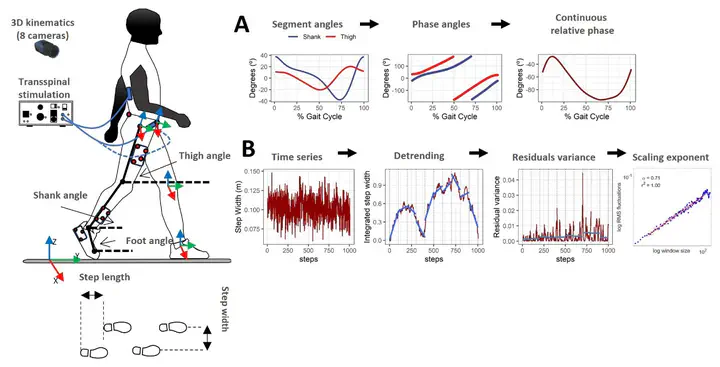Effects of transspinal stimulation on spinal locomotor centers in healthy individuals

Abstract
Transspinal stimulation affects the spinal locomotor networks and is used to improve walking ability in people with spinal cord injury. However, the effects of transspinal stimulation on joint coordination and spatiotemporal gait characteristics is not known. Here, we document interlimb/intralimb coordination and gait variability characteristics during transspinal stimulation delivered at 15, 30, and 50 Hz at sub-threshold and supra-threshold intensities in 10 healthy subjects. Transspinal stimulation promoted a more stable shank-foot and left-right thigh coordination, and a more persistent step length variability– characteristics of healthy gait. These results support that transspinal stimulation is an important neuromodulatory strategy that directly affects spinal locomotor centers.